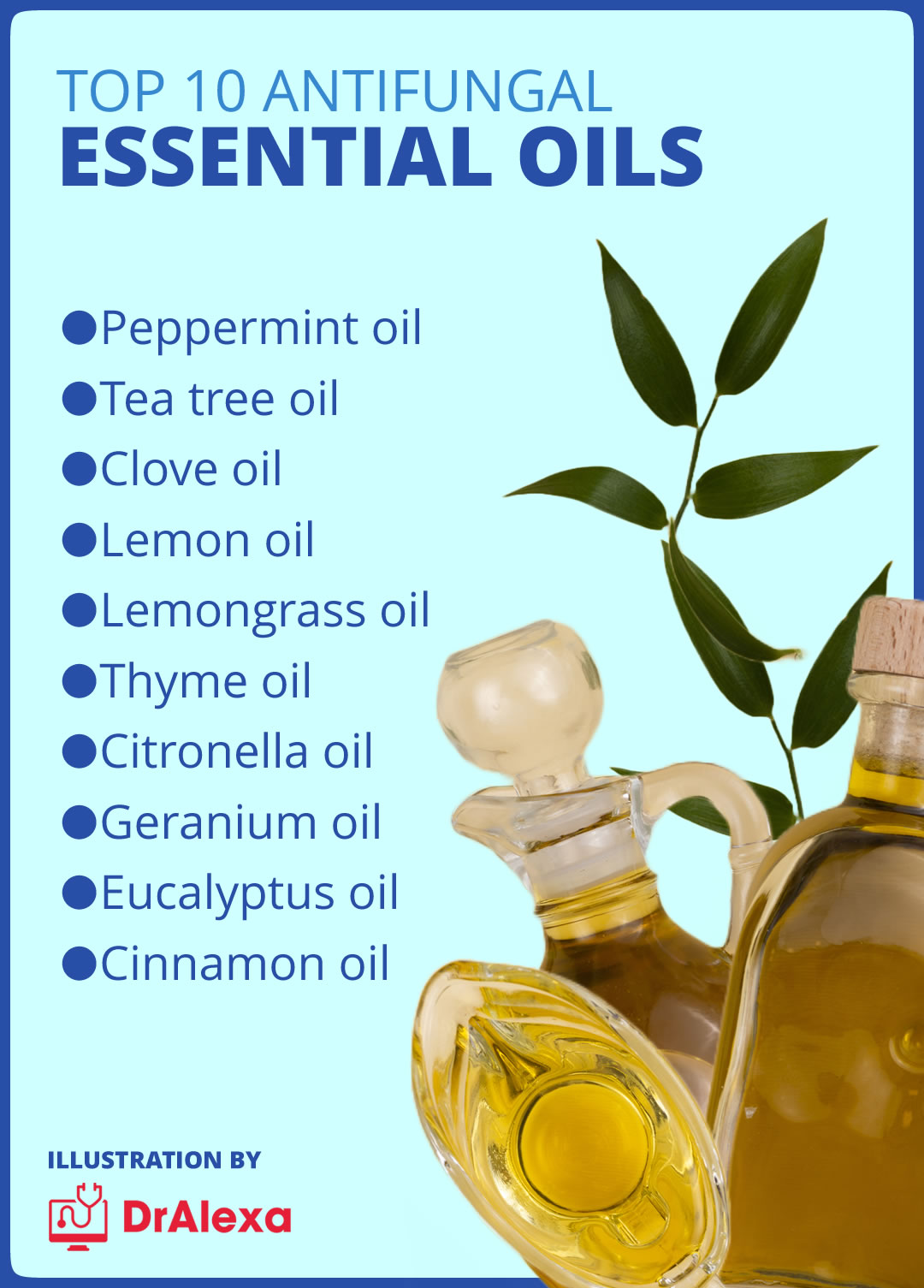Candidiasis — or vaginal yeast infection — is a common concern for women everywhere. Official U.S. government statistics show that 75% of women will acquire this condition at least once in their lifetime.
Candidiasis patients complain about burning sensations, swelling, or thick discharge. If left untreated, it can worsen or become a chronic condition.
Some specialists recommend using essential oils for yeast infections. This article will discuss their effectiveness, types, and usage. Read on to discover how these oils are an ideal option for you.
Can Essential Oils Rid You of a Vaginal Yeast Infection?
In most cases, a fungus called candida albicans causes yeast overgrowth. The vagina naturally contains a combination of yeast and bacteria, and any imbalance might trigger candida overgrowth.
For this reason, treatments often contain antiseptic, anti-inflammatory, and antifungal properties. However, unknown to many, the suitable essential oil recipes also have similar attributes.
For instance, various studies have proven that women can use lavender oils for vaginal discharge. Some people have turned to this medicinal herb in traditional medicine, effectively addressing candidiasis symptoms. With the help of specialists, women can blend this ingredient to create a custom combination that works for their condition.
While most studies used isolated infection strains in laboratories, this treatment shows promise for human use. Individuals dealing with drug-resistant infections can use this plant-based solution for their candidiasis.
List of Best Essential Oils for Yeast Infection
Sometimes, vaginal infections go away on their own. Women experiencing mild symptoms can wait a few days to determine whether they need treatment or not. However, seeing a doctor would be ideal when symptoms include pain, inflammation, or cottage cheese-like discharge.
When specialists recommend using an essential oil, treatment may take a few days.
Are Essential Oils Safe?
Yes, they are if patients use them correctly. For instance, inhaling them directly or through a diffuser is okay. However, most oil types are not safe for consumption.
Some recipes work better than others, especially those with antifungal and immunity-boosting qualities. Below are some of the most effective options.
Peppermint Oil
Peppermint oil is one of the best antifungal oils. Its core ingredient is peppermint — a type of plant experts consider a wild mint and spearmint hybrid.
This plant is widely used in aromatherapy because of its wide range of uses. The herb contains attributes that help fight the following:
- Yeast infections
- Bacterial infections
- Depression and anxiety
- Headaches and migraines
- Digestive problems
The acid in the vagina usually controls the growth of candida albicans. Still, factors like birth control pills and antibiotics can disrupt the balance in the body. As a fungicide, peppermint oil can eliminate excessive harmful bacteria to achieve ideal pH levels. Additionally, it can also address cramping symptoms.
Tea Tree Oil
Tea tree essential oil comes from the leaves of the Australian tea tree, also known as melaleuca alternifolia. Contrary to popular belief, it is not the same plant as the one used for black, green, and oolong tea.
Today, consumers use tea tree oil for various applications. For example, it powers hand sanitizer, insect repellent, and deodorant products. Its also used as an oral thrush mouthwash recipe. Additionally, researchers also discovered its effectiveness against vaginal candidiasis.
Initially, the specialists claimed that the oil worked against 14 strains of the condition, where it cleared infection symptoms in lab rats in three weeks. However, newer studies suggest that tea tree oil works best at specific concentrations or when used with conventional medications.
Either way, patients who want to use tea tree oil should consult with a doctor to address their ailment. Using this oil without a specialist’s guidance might not achieve ideal results.
Clove Essential Oil
As the name suggests, this oil comes from clove trees. While native to Southeast Asian countries, they also grow in other regions. Manufacturers create this oil type by distilling the dried flower buds collected from the tree.
In most cases, it comes in a pale yellow hue. However, the color may range from colorless to dark brown. Its powerful, spicy aroma sets it apart from other oils.
People use this oil to address different conditions, including body pains, digestive problems, and even candidiasis. It contains antimicrobial and pain-relieving capabilities, making it an ideal treatment.
Some studies suggest topical administration is the most effective way to use it against any vaginal infection.
Lemon Oil
Lemon oil comes from lemon skin. Users can dilute it for inhalation or apply it directly to the skin in oil form.
This oil type aids in alleviating various symptoms, including:
- Depression and anxiety
- Body pains
- Morning sickness
- Colds
- Acne
Plus, lemon oil contains terpenoids — organic chemicals with antibacterial, pain relief, and anti-inflammatory abilities. In addition, this ingredient inhibits the growth of ergosterol, an essential component for fungal formation. For this reason, like its eucalyptus, pine, and cinnamon counterparts, it shows potential against candidiasis.
Some people confuse lemon oil with lemongrass essential oil, but they are two different formulations. Apart from their lemony scents, they do not have much in common.
How to Use Essential Oils for Yeast Infections
Aromatherapy oils are highly concentrated plant extracts, and people can address infections with them. Choosing the ideal oil combination and application method is necessary for effective treatment. The most common methods include inhalation, skin application, or shower accessories.
Inhalation
The simplest way to use any essential oil is to inhale it. To do this, users should open a bottle of pure essential oil, keep it about two inches below the nose, and breathe a few times deeply. It’s crucial not to let it touch the skin.
There are other enhanced inhalation methods, like using diffusers, humidifiers, or soft fabrics.
Skin Application
The first reminder in essential oil application is not to apply it directly to the skin. These oils may be natural, but they can also be harmful, like poison ivy. As they are concentrated solutions, they may cause extreme reactions, such as burns and rashes.
For any essential oil to work through skin application, it’s crucial to use it with a carrier or lotion. This process helps the skin tolerate the mixture better.
Shower Accessory
People with skin infections can add different oil types to their shampoo or body wash. They can also dilute a few oil drops with a carrier oil and mix them with the bathwater.
How Do You Use Essential Oils to Heal a Vaginal Yeast Infection?
Women with vaginal candidiasis can use oils in suppositories, emulsions, and creams. Below are more details about these treatments.
Suppositories
Women can purchase premade tea tree suppositories online. However, it’s best to work with a doctor before starting treatment. In most cases, they recommend using one suppository daily for one week.
Here’s a step-by-step guide to inserting the product:
- First, make sure you have clean hands.
- Then, remove the plastic strips from the suppository.
- Next, insert it into your vagina with an applicator or a finger as you would a tampon.
As much as possible, use the suppository at the same time each day.
Emulsions
An oregano-coconut oil combination can do wonders for yeast infections. Use the coconut oil as a carrier for the oregano essential oil, soak a tampon in the emulsion for a few minutes, and then insert it into your vagina. Repeat this process every two to four hours.
Creams
It’s also possible to use a cream to treat a yeast infection. First, combine five drops of chamomile, lavender, and tea tree oil with four ounces of yogurt. Afterward, apply the mixture to the vagina’s interiors.

The Most Effective Antifungal Essential Oils
When treating a yeast infection, it’s best to choose antifungal oils. Below are some of the most effective ones against fungi and bacteria.
Peppermint oil
Tea tree oil
Clove oil
Lemon oil
Lemongrass oil
Thyme essential oil
Citronella oil
Geranium oil
Eucalyptus oil
Cinnamon oil
Thyme oil
Frequently Asked Questions
Like medications, essential oils work differently. For this reason, women should consult with specialists before starting any treatment plan. When used correctly, some essential oils can treat infections. However, some won’t be as effective against candidiasis.
Specialists claim that oregano oil is the most potent antifungal among essential oils. Apart from treating yeast infections, its antibacterial properties can fight diseases like typhoid, cholera, and sores.
While it’s not as potent as other oil types, lavender oil is still a potent antifungal. Many people use it to address anxiety, insomnia, and nausea symptoms, but it’s also effective against skin conditions. For instance, it can help fight candida and eczema.
Peppermint oil is a powerful antibacterial solution, but it can be too harsh in its pure form. Women who want to use this oil for yeast infections should consult their doctors first. There are ideal concentrations to achieve desired results.
No, essential oils are too potent for direct skin application. Like apple cider vinegar, if misused, it can cause burns and rashes. Instead, women with yeast infections should use essential oils as suppositories, emulsions, and creams to address their symptoms.
Treat Your Yeast Infection Now
The first step to addressing yeast infection is to consult a specialist, especially when symptoms don’t go away independently. With a doctor on your side, you can confirm your condition and create the ideal treatment plan for you.
At DrAlexa, we offer affordable online visits through telehealth services. Even without insurance, you can book our services for as low as $29.
Finally, you don’t have to wait to find a cure for your condition. Remember, candidiasis can worsen if left untreated and become a chronic disease.
Call DrAlexa Today
Call us at (469) 498 6868 to schedule your consultation.





